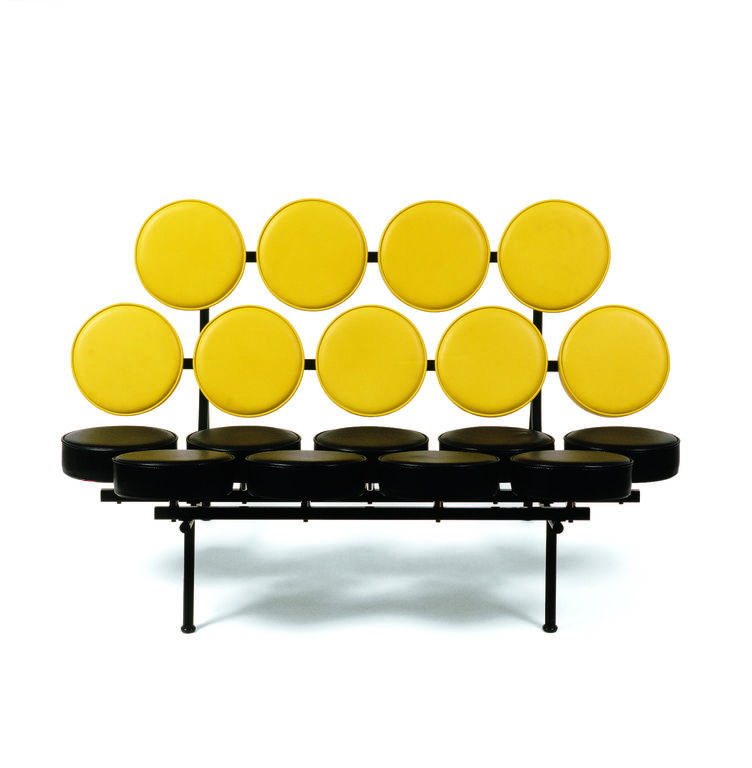
If you have a friend that says they don’t like pop art make sure to take them to the new exhibit at the Museum of Contemporary Art Chicago (MCA) where they’ll realize most people actually love and are influenced by pop art and don’t realize it.
“Pop Art Design” at the MCA presents works by famed pop artists like Andy Warhol, Roy Lichtenstein, and others next to furniture, graphic design pieces, and architecture works that show how pop art either takes from or inspires objects that all people use in their everyday lives. From the album covers that we cherish to the bubble chair that at some point we all wanted, this is exhibit shows that pop art is everywhere. There are great pieces in this exhibit like Robert Rauschenberg’s “Retroactive II,” and Andy Warhol’s “Souper Dress” but the real genius is seeing these pieces next to design objects and realizing the impact of the pop art movement.
The best example of this interplay came up during my visit to the exhibit where a gentleman for a moment believed that a late-’40s/early-’50s Coca-Cola vending machine was an art piece by a pop artist and not just a functioning vending machine. He isn’t wrong for thinking this especially when the machine is presented next to Simon International’s paint drum made to look like a Campbell’s Soup can called “Omaggio ad Andy Warhol.” While the vending machine is used to show where pop art got it’s influence, it is still a beautiful piece of art and the fact that it at some point served a function does not detract it from being art but makes it even better.
Next to the “Pop Art Design” exhibit is a companion exhibit called “The Street, the Store and the Silver Screen: Pop Art From the MCA Collection.” In this exhibit we leave the design behind and focus solely on the art. As the title suggest the exhibit is divided in three. In the street section lane markers are put on the floor and we see eye-popping pieces that not only represent the grittiness of the street but even some Midwest influence like Ed Paschke’s oil painting “Casey.” For the store section not only do we see an actual storefront by Christo but we see pieces like Alex Hay’s “Lightbulb,” which is a new acquisition for the MCA. No piece represents the silver screen section better than Warhol’s “Troy Diptych” where Warhol presents the American infatuation with celebrities through the 102 silk-screened photographs of Troy Donahue. Both exhibits together can easily be taken as a master class on the pop art movement.
“Pop Art Design” and “The Street, the Store and the Silver Screen: Pop Art From the MCA Collection” will be on view until March 27, 2016 at the Museum of Contemporary Art Chicago located at 220 E. Chicago Ave. For more information visit mcachicago.org/Exhibitions/2015/Pop-Art-Design.


